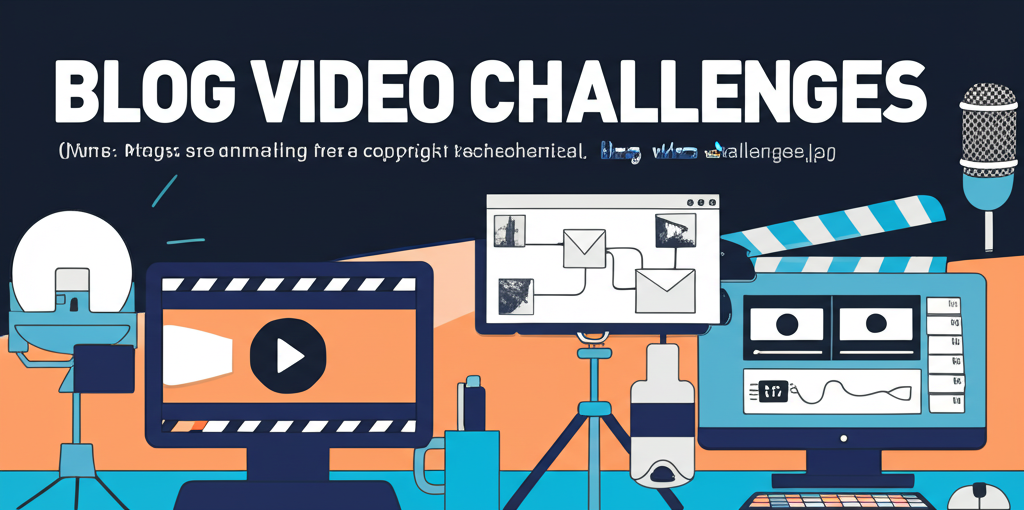Overcoming Video Understanding Challenges with AI

The Growing Challenge of Video Content
As video content continues to proliferate across industries, organizations face increasing challenges in managing, analyzing, and extracting value from this rich but complex medium. Traditional approaches to video analysis are proving inadequate for the scale and complexity of today's video content landscape.
In this article, we'll explore the key challenges in video understanding and how Seaweed AI's innovative approach is addressing these obstacles with advanced artificial intelligence.
Challenge 1: Scale and Volume
The sheer volume of video content being created today is staggering. Every minute, hundreds of hours of video are uploaded to platforms like YouTube alone. For organizations managing their own video libraries, this scale presents significant challenges in storage, organization, and retrieval.
Traditional video management systems rely on manual tagging and metadata, which simply cannot keep pace with the volume of content. Even with dedicated teams, maintaining accurate and comprehensive metadata for large video libraries is virtually impossible using conventional methods.
How Seaweed AI Solves This:
Seaweed AI's automated content analysis processes videos at scale, automatically generating rich metadata without human intervention. The platform can analyze thousands of hours of video content, identifying key topics, entities, and moments to create a searchable index that grows alongside your content library.
Challenge 2: Multimodal Understanding
Video is inherently multimodal, combining visual elements, spoken language, on-screen text, audio cues, and temporal relationships. Traditional video analysis tools typically focus on just one of these modalities, missing the rich context that comes from their integration.
For example, a system might recognize objects in a frame but miss the significance of those objects based on what's being said, or it might transcribe speech without connecting it to the visual context that gives the words meaning.
How Seaweed AI Solves This:
Seaweed AI employs sophisticated multi-modal neural networks that process different aspects of video content simultaneously. By analyzing visual elements, audio tracks, spoken language, and text overlays in parallel and then integrating these insights, Seaweed AI achieves a holistic understanding that captures the full context and meaning of video content.
Challenge 3: Semantic Search and Retrieval
Finding specific content within videos has traditionally been limited to keyword matching against titles, descriptions, or transcripts. This approach fails to capture the semantic meaning and context of the content, making it difficult to find relevant information when the exact terms aren't used.
For example, a user looking for "sustainable urban planning examples" might miss relevant content about "green city initiatives" or "eco-friendly metropolitan development" if those exact keywords aren't present.
How Seaweed AI Solves This:
Seaweed AI's semantic search capability goes beyond keywords to understand the meaning and context of queries. The platform builds dynamic knowledge graphs that represent entities, concepts, actions, and their relationships as they appear in videos. This enables users to find relevant content based on meaning rather than exact term matching, dramatically improving search accuracy and usefulness.
Challenge 4: Temporal Understanding
Videos unfold over time, with meaning derived from sequences, narrative development, and changes in context. Traditional analysis tools struggle to capture these temporal aspects, often treating videos as collections of isolated frames or segments without understanding how they relate to each other over time.
This limitation makes it difficult to follow complex storylines, recognize when topics change, or maintain context across long-form content.
How Seaweed AI Solves This:
Seaweed AI incorporates advanced temporal modeling techniques that capture the dynamic aspects of video content. Using recurrent neural networks and transformer-based architectures, the system tracks narrative development, causal relationships, and contextual shifts throughout a video, maintaining a coherent understanding of content as it evolves over time.
Challenge 5: Content Summarization
The length of video content presents a significant challenge for users trying to quickly extract key information. Without effective summarization, users must watch entire videos to find relevant information, a time-consuming process that becomes impractical as video libraries grow.
Traditional approaches to video summarization often rely on simple techniques like selecting frames at regular intervals or identifying scenes with high visual activity, which frequently miss the most semantically important content.
How Seaweed AI Solves This:
Seaweed AI automatically generates concise, accurate summaries of video content at different levels of detail. By understanding the semantic importance of different segments, the platform can create both text-based summaries and visual highlight reels that capture the most significant information, saving hours of watching time while ensuring no important content is missed.
Conclusion: A New Paradigm for Video Understanding
The challenges of video understanding require a fundamentally new approach that goes beyond traditional methods. Seaweed AI represents this new paradigm, combining advanced neural architectures, multi-modal processing, and semantic understanding to transform how organizations interact with video content.
By addressing the core challenges of scale, multi-modal integration, semantic search, temporal understanding, and content summarization, Seaweed AI is making video content as searchable, analyzable, and valuable as text. For organizations across industries, this opens new possibilities for leveraging the full potential of their video assets.
As video continues to grow as a primary medium for communication, education, and entertainment, the ability to effectively understand and work with video content will become increasingly critical. With Seaweed AI, organizations can stay ahead of this trend, turning the challenge of video understanding into a strategic advantage.